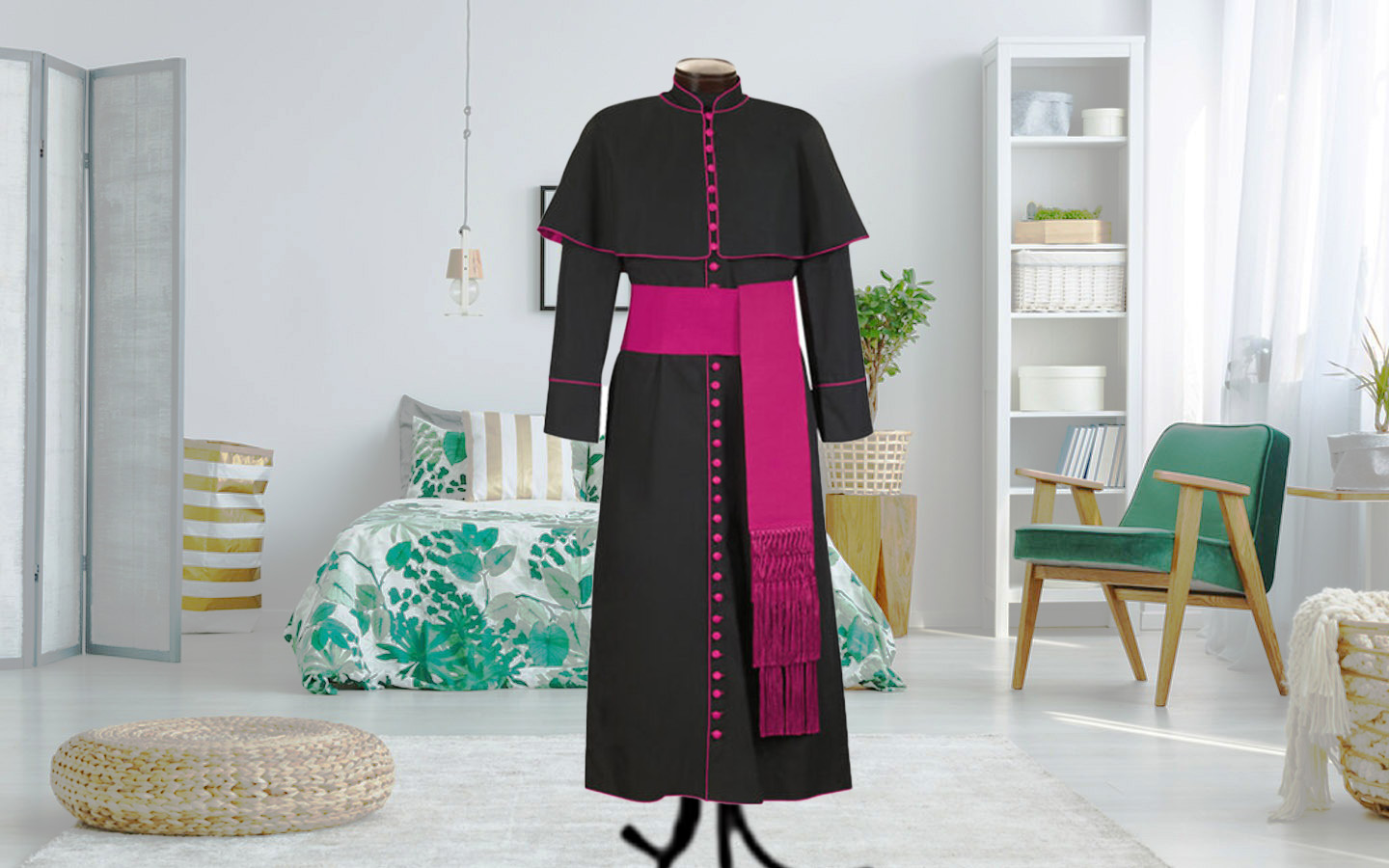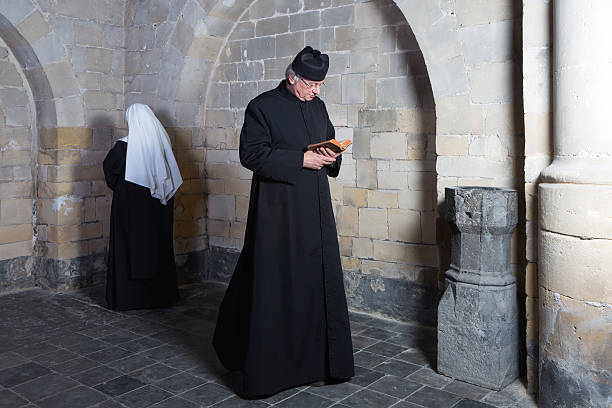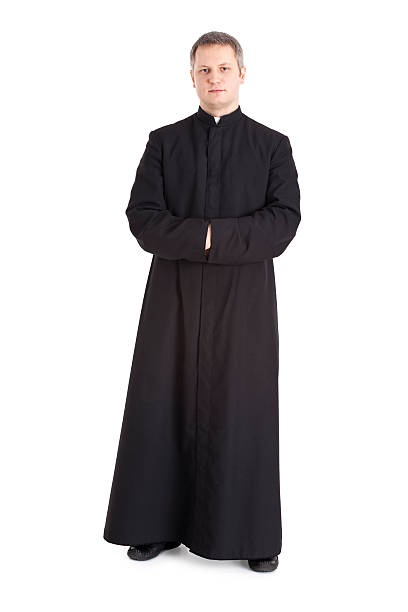Cassock the Threads of Tradition and Trend in Clerical Attire
In the sacred realm of religious vestments, the cassock stands as an enduring symbol of clerical identity and commitment. This comprehensive exploration delves into the origins, symbolism, evolving trends, and contemporary significance of the cassock a garment that weaves together threads of tradition and adaptation.
Historical Tapestry of the Cassock
The journey of the cassock traces back through centuries, echoing the simple tunics worn by early Christian clergy and monks. Rooted in a commitment to modesty and humility, the cassock evolved as a practical and symbolic garment, becoming a staple in various religious traditions.
The color of the cassock holds profound symbolism. Traditionally black, it signifies mourning and penance, reminding clergy members and observers alike of the gravity of the priestly vocation. Other hues, such as purple or red, may be adopted during specific liturgical seasons, infusing the cassock with additional layers of meaning.

Threads of Tradition
Beyond its symbolism, the cassock serves a practical purpose during religious ceremonies. Its ankle-length design allows for ease of movement, facilitating the fluidity required during various liturgical activities. This functional aspect, coupled with its historical significance, solidifies the cassock's role in preserving tradition.
Consecration and Humility
The clerical cassock is a visual testament to the clergy member's commitment to a life of consecration and humility. Its unadorned simplicity reflects the selfless service inherent in the priestly calling. The act of donning the clergy cassock becomes a daily ritual, a reaffirmation of the sacred vows taken in service to the divine.
Weaving Modern Threads
In the ever-evolving landscape of fashion and religious expression, the cassock has not remained untouched by modern influences. Some clergy members embrace tailored variations or explore different fabrics, providing a contemporary twist to this traditional garment while maintaining its core symbolism.
The cassock serves as a universal symbol of clerical identity, transcending cultural and denominational boundaries. Whether worn by a Catholic priest, Anglican clergy, or in other denominations, the cassock becomes a visual unifier, emphasizing the shared commitment to a life of service and devotion.
Cassock Trends and Testimonies
Recent years have witnessed subtle shifts in cassock trends. Contemporary designers, cognizant of the intersection between tradition and modernity, introduce slimmed silhouettes, innovative fabrics, and minimalist designs. These adaptations reflect an ongoing dialogue between the timeless essence of the cassock and the changing currents of style.
Beneath the folds of the clergy robes lies the personal testimony of each clergy member. The choice to wear this distinctive garment becomes a visual narrative of their spiritual journey, a tangible expression of faith and dedication. These testimonies enrich the fabric of religious communities, weaving a collective narrative of shared commitment.
Cassock in the Global Mosaic
The cassock, while deeply rooted in tradition, adapts to cultural nuances around the world. Different denominations and regions infuse unique elements into the design, creating a diverse global mosaic of clerical attire. Exploring these cultural influences expands our understanding of the universal language spoken through the cassock.
 Beyond Denominational Borders
Beyond Denominational Borders
The cassock's significance extends beyond denominational borders, fostering unity among clergy members of various faith traditions. Shared elements of design and purpose create a visual harmony, emphasizing the interconnectedness of religious communities globally.
In the intricate weave of tradition, adaptation, and personal testimony, the cassock emerges as a garment that transcends time and geography. From its humble origins in early Christian monasticism to its modern adaptations in a globalized world, the cassock remains a powerful symbol of clerical commitment. As the threads of tradition intertwine with contemporary expressions, the cassock continues to stand as a resilient and cherished emblem in the diverse tapestry of religious attire, embodying the enduring spirit of sacred service and devotion.
What is a cassock in the Catholic Church?
A cassock is a long, ankle-length robe worn by clergy members in the Catholic Church. It is a symbol of religious devotion and is often part of the traditional liturgical vestments.
Priests wear cassocks as a visual representation of their commitment to religious service and humility. The cassock symbolizes consecration and serves as a distinctive marker of the priestly vocation.
Can women in the clergy wear cassocks?
The acceptance of women wearing cassocks varies among denominations. In some traditions, female clergy members wear cassocks similar to their male counterparts, while in others, they may have specific vestments designed for women.
What is the significance of the color of a cassock?
The color of a cassock holds symbolic meaning. Traditionally black, it signifies mourning and penance. Different colors may be worn during specific liturgical seasons, each carrying its own significance related to the themes of the Church calendar.
Can cassocks be worn by clergy in different denominations?
Yes, cassocks are worn by clergy members in various denominations, although the specific design and colors may differ. The cassock is a symbol of clerical identity that transcends denominational boundaries.
How has the design of cassocks evolved over time?
The design of cassocks has evolved, adapting to changes in fashion and liturgical preferences. While maintaining its basic structure, modern variations may include tailored fits and different fabrics.
Are there specific occasions or liturgical seasons when clergy wear different colored cassocks?
Yes, clergy may wear different colored cassocks during specific liturgical seasons or ceremonies. For example, purple or violet may be worn during Advent and Lent, while white or gold is common for celebratory occasions.
What accessories are typically worn with a cassock?
Accessories that complement a cassock may include a surplice, a white garment worn over the cassock, as well as a stole, cincture (cord), and zucchetto (skullcap).
Do cassocks have different styles for different ranks within the clergy?
Yes, different ranks within the clergy may have variations in the design or detailing of their cassocks. Bishops, for instance, might have additional trim or colors to distinguish their rank.
Are there guidelines for the length and fit of a cassock?
Guidelines for the length and fit of a cassock may vary, but generally, it is ankle-length and has a loose fit. The specific guidelines can depend on the traditions of the particular religious community.
What is the symbolism behind the cassock in religious ceremonies?
The cassock symbolizes the consecration and set-apartness of clergy members. Its presence in religious ceremonies reinforces the sacred nature of the rituals and the priest's role as a mediator between the divine and the congregation.
How do cassocks differ from other liturgical vestments?
Cassocks are one of the liturgical vestments, typically worn as an outer garment. They differ from other vestments like albs, chasubles, and stoles, each serving specific roles in religious ceremonies.
Are there modern interpretations or adaptations of the traditional cassock?
Yes, modern interpretations of the cassock may include variations in style, fabric, and fit, reflecting contemporary fashion while preserving the essential symbolism and functionality of the garment.
What role does the cassock play in the identity of clergy members?
The cassock plays a crucial role in defining the identity of clergy members. It serves as a visible marker of their vocation, fostering a sense of unity and recognition within the religious community.


No comments yet